Amazon FBA setup is key to success. Learn how to set up FBA and optimize Amazon logistics in 5 steps to cut costs, increase delivery speed, and boost customer satisfaction.
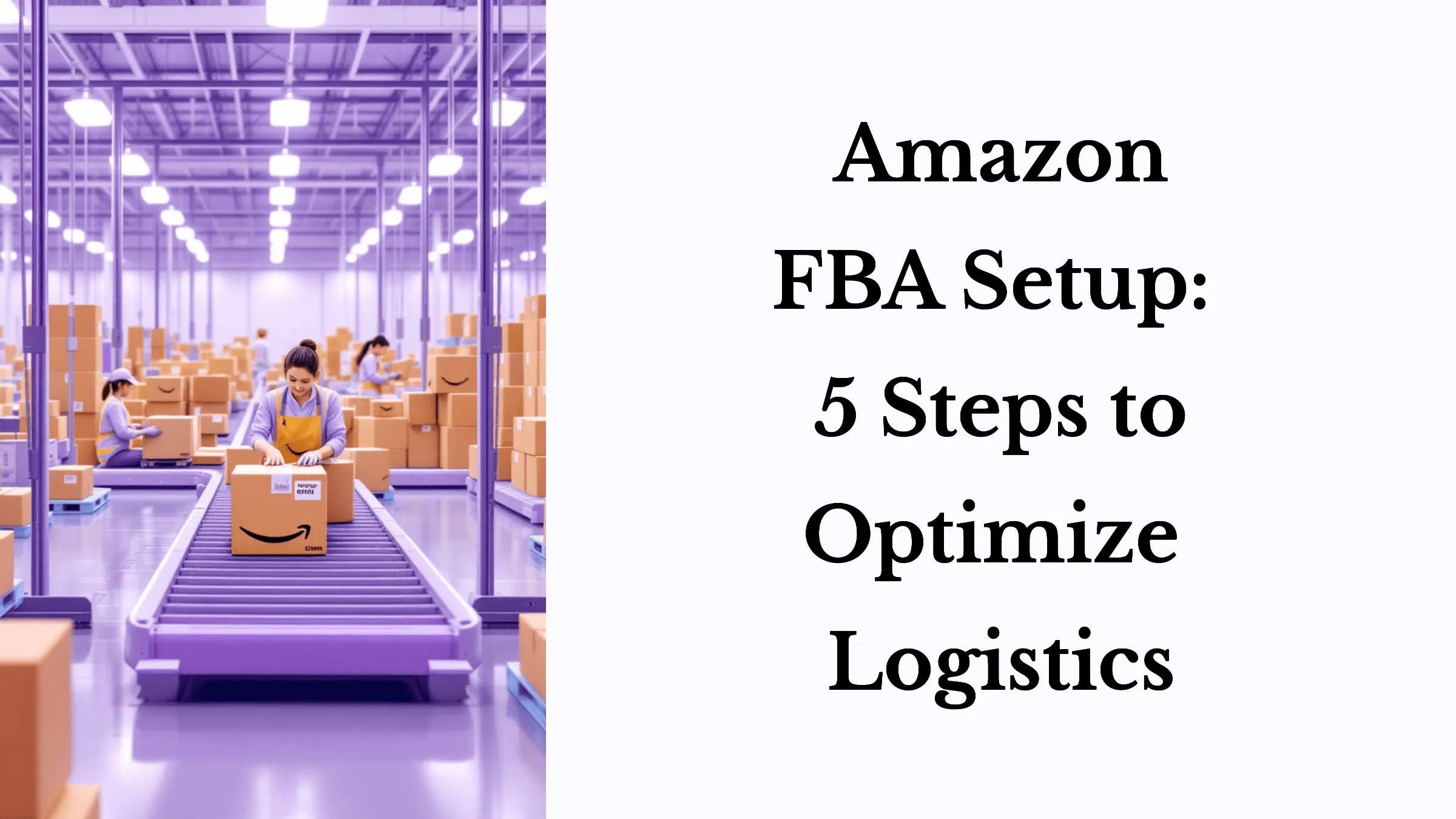
Amazon FBA (Fulfillment by Amazon) is a powerful tool that can help sellers scale efficiently. In this guide, we break down the FBA setup and logistics optimization process into five practical steps. Learn how to streamline shipping, reduce costs, and elevate your Amazon business using the tools inside Amazon Seller Central.
Table of Contents
- What Is Amazon FBA? Benefits and Key Features
- How to Set Up FBA in Amazon Seller Central
- Inventory and Logistics Optimization Strategies
- Shipping Optimization and Cost-Saving Tips
- Important Considerations When Using FBA
1. What Is Amazon FBA Setup? Benefits and Key Features
Amazon FBA (Fulfillment by Amazon) allows sellers to store products in Amazon’s fulfillment centers while Amazon handles packing, shipping, customer service, and returns. Here are its top benefits:
- Prime Shipping: FBA products qualify for Prime delivery, boosting conversion rates and customer trust.
- Customer Support and Returns: Amazon handles returns and inquiries, reducing seller workload and enhancing customer satisfaction.
- Automated Fulfillment: Orders are processed without seller intervention, allowing you to scale your business.
- Global Selling Support: With FBA Global Selling, you can ship quickly to customers in the U.S., Europe, and Asia using Amazon’s global network.
- Increased Trust: The “Fulfilled by Amazon” tag signals reliability and encourages purchases.
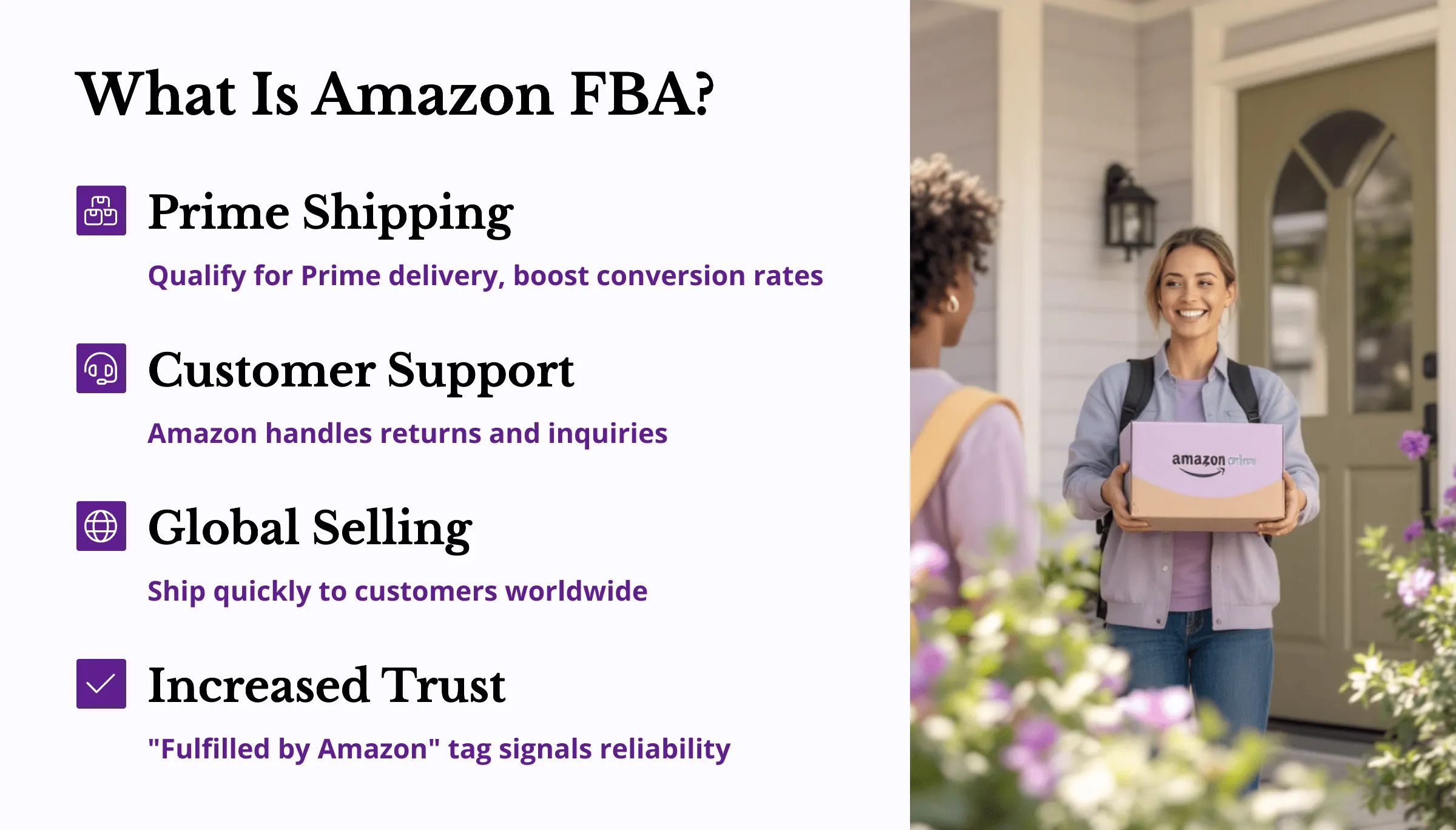
2. How to Set Up FBA in Amazon Seller Central
To activate FBA, follow these steps:
- Register a Seller Account: Sign up at Amazon Seller Central, choose your selling plan, and complete identity verification.
- Activate FBA: In Seller Central, navigate to FBA settings, agree to terms, and activate the program.
- Convert or Register Products for FBA: Choose your SKUs and enable FBA under inventory settings. Accurate product categorization and barcode labeling are crucial.
- Create a Shipping Plan: Set up your shipment in Seller Central, input box dimensions and weight, and print Amazon shipping labels.
- Package and Label Products: Follow Amazon’s packaging and labeling guidelines. Improper labeling may result in extra fees or rejected inventory.
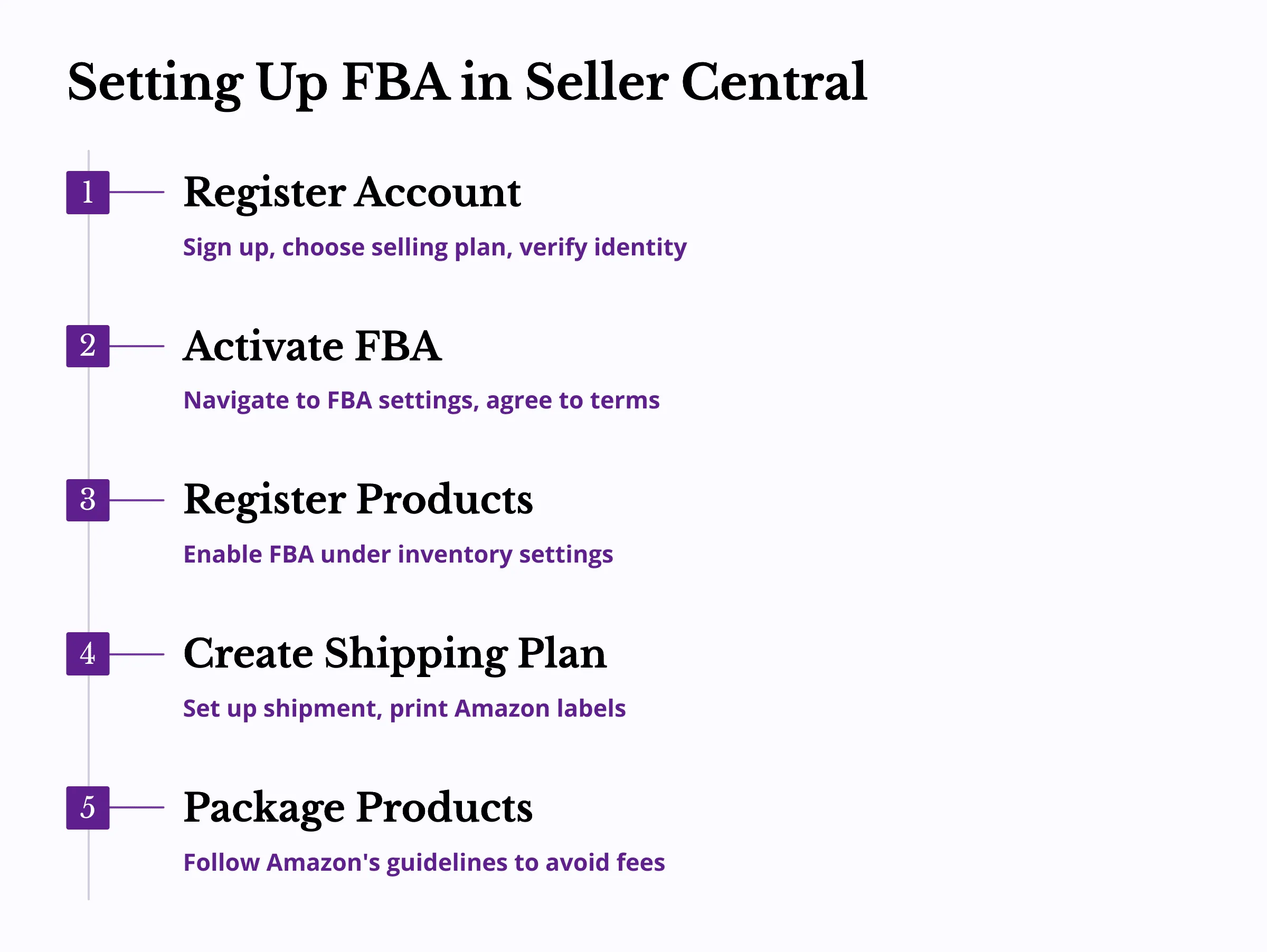
3. Inventory and Logistics Optimization Strategies
Effective inventory management reduces cost and maximizes availability:
- Track Inventory Turnover: High turnover means strong sales—plan quick restocks. Low turnover? Consider discounts to clear stock.
- Reduce FBA Fees: Avoid long-term storage fees by removing stagnant inventory or running promotions.
- Set Up Automatic Reorders: Use Amazon’s Restock Report to forecast inventory needs and set reorder thresholds.
- Use Multi-Channel Fulfillment (MCF): Combine FBA with MFN to optimize for cost and delivery speed based on product and region.
- Plan for Seasonal Demand: Analyze historical data to prepare inventory ahead of high-demand seasons.
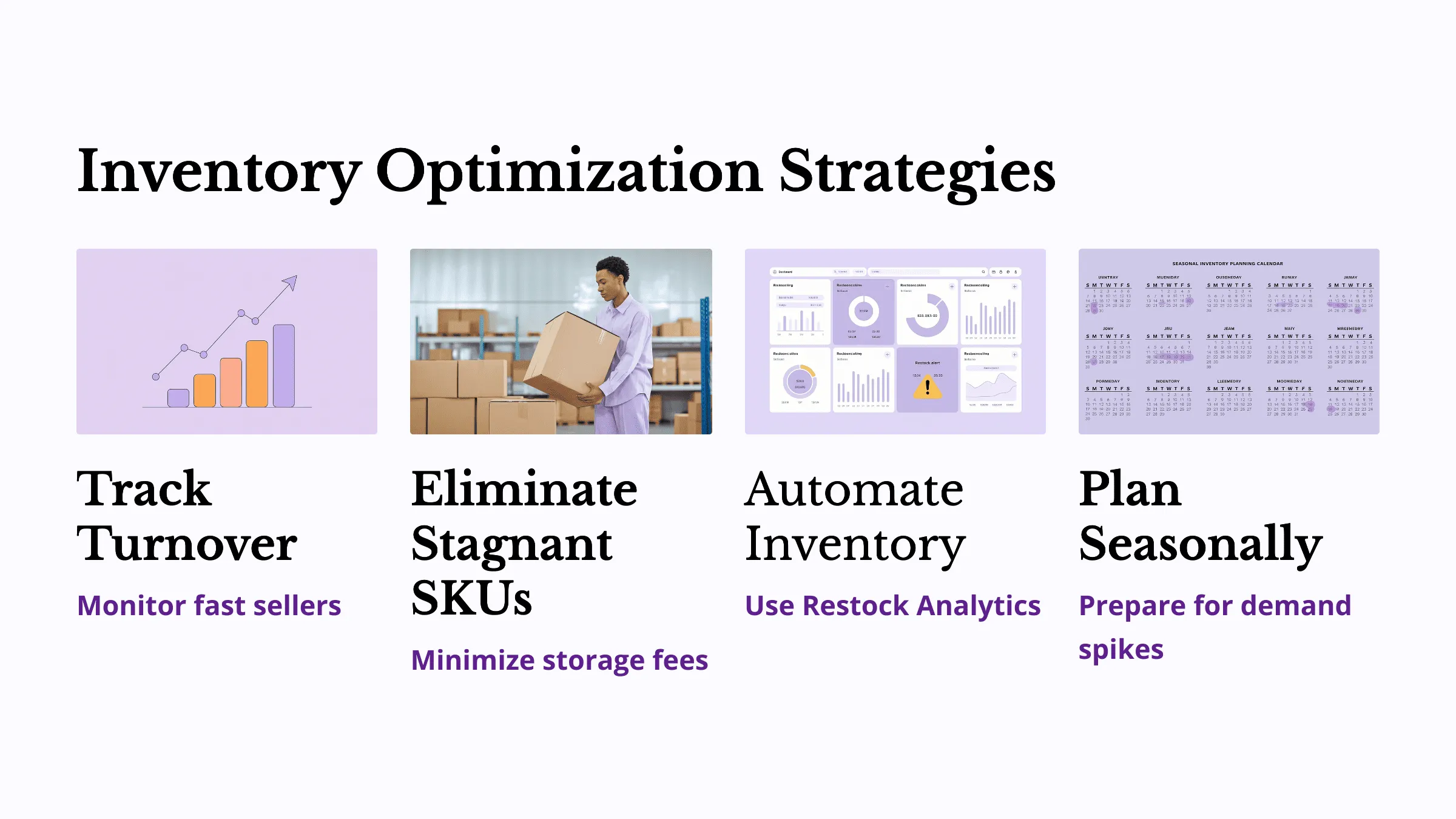
4. Shipping Optimization and Cost-Saving Tips
Save on shipping without sacrificing delivery speed:
- Compare Amazon Shipping Rates: Choose the most economical method based on size and category.
- Use Amazon Partnered Carrier Programs: Get discounted rates for FBA shipments to fulfillment centers.
- Minimize Packaging Size: Smaller packages reduce shipping fees. Use Frustration-Free Packaging to save costs and go eco-friendly.
- Track Shipments in Real-Time: Use Seller Central’s shipping dashboard to monitor deliveries and resolve issues promptly.
- Leverage Multiple Fulfillment Centers: Distribute inventory across regions to cut delivery times and costs.
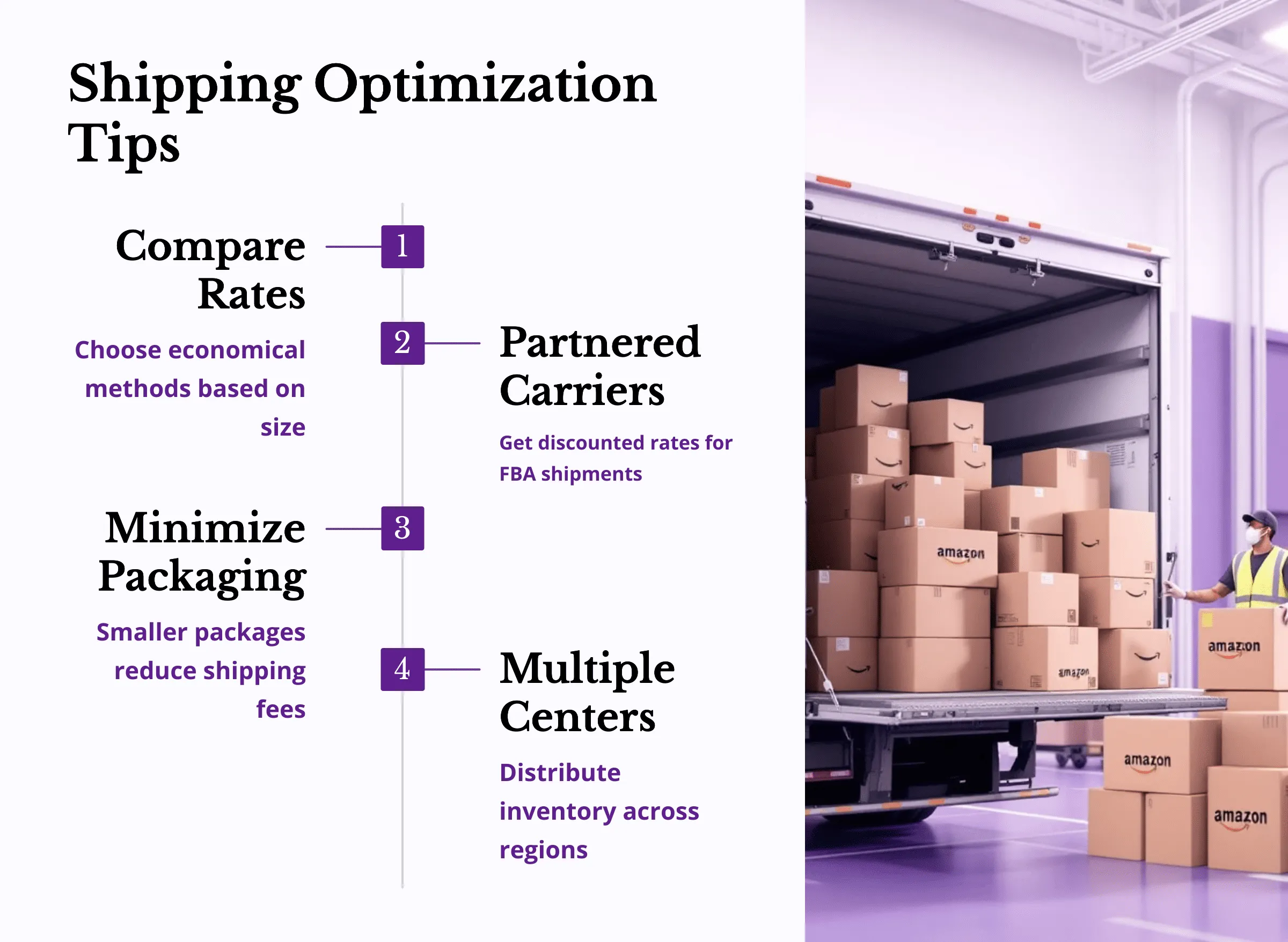
5. Important Considerations When Using Amazon FBA Setup
Avoid common pitfalls by keeping these in mind:
- Understand FBA fee structure (storage, fulfillment, labeling).
- Learn Amazon’s return policy and how it affects your margins.
- Check for FBA-restricted products.
- Plan for delays during peak seasons.
- Follow packaging rules strictly to avoid rejection.
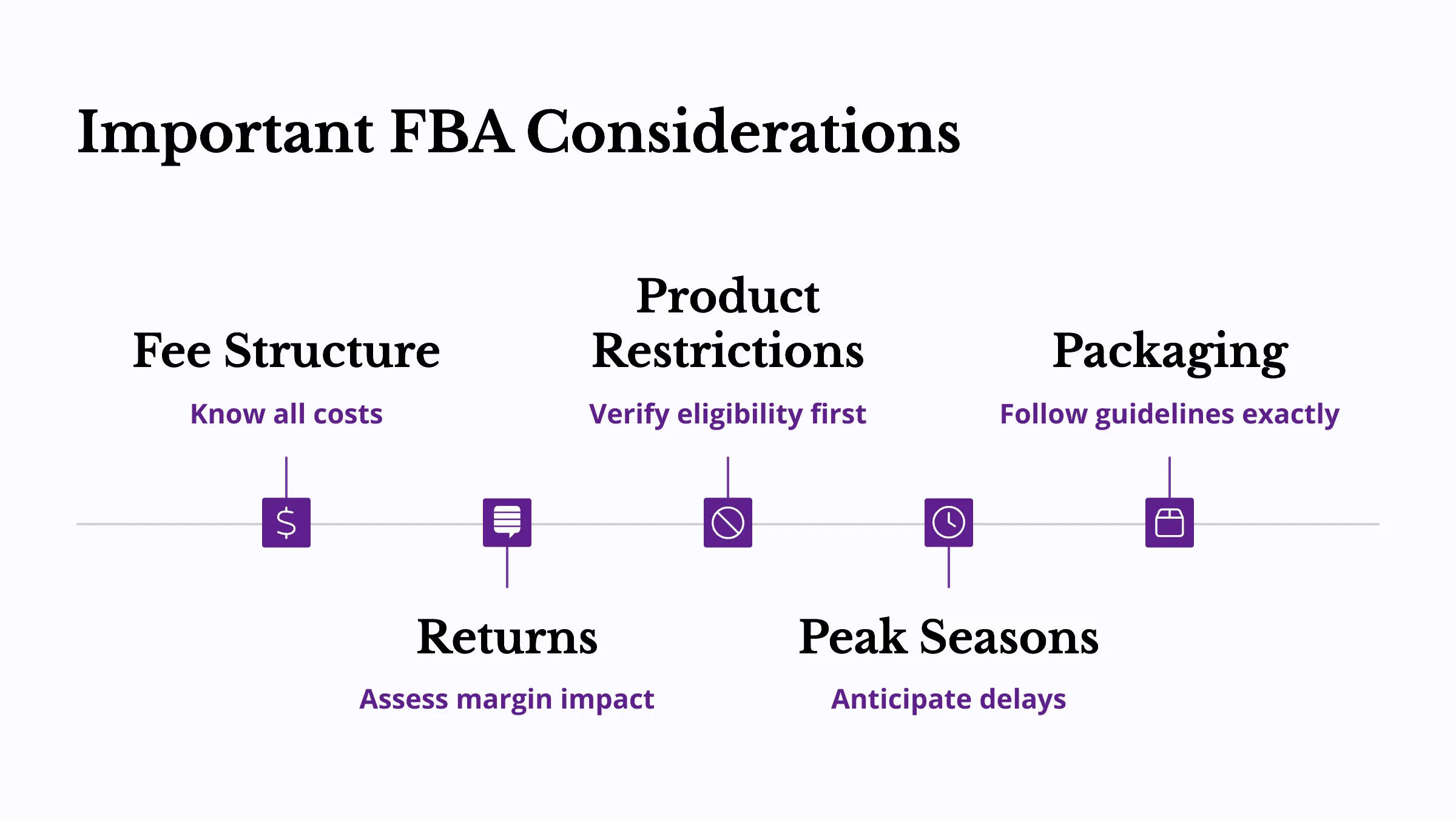
Final Thoughts: Make Amazon FBA
Setup Work for You
Amazon FBA setup and logistics optimization are essential for long-term success. By following the five steps above, sellers can reduce costs, improve delivery speed, and elevate the overall shopping experience. Regular inventory checks and shipping analysis—done weekly for fast-selling items and monthly for slower stock—help maintain efficiency.
Amazon FBA setup is not just a technical step—it’s a growth strategy. When managed correctly, it leads to higher customer retention, better reviews, and sustainable profit.
From product fulfillment to website setup, these are practical tools I’ve used myself.
- 👉 Printful – Easily launch a store without inventory and automate production & delivery.
- 👉 GoDaddy Domain Starter – Secure your brand with a custom domain name.
- 👉 GoDaddy Website Builder – Quickly build your website and brand assets in one go.
※ This post contains affiliate links. If you sign up or purchase through the links above, I may earn a commission—at no extra cost to you.
3. 6 Essential Amazon Seller Central Dashboard Sections You Must Master in 2025 to Boost Sales